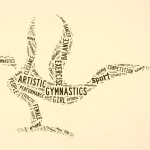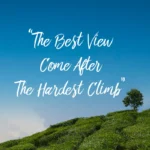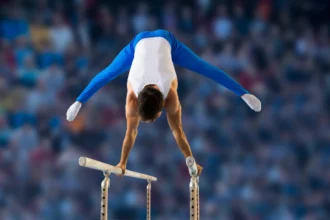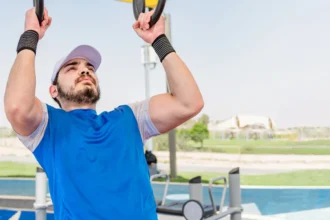When starting out in gymnastics, one of the most common questions beginners ask is whether they should first learn a frontflip, backflip, or sideflip. Each flip has its own set of advantages and challenges. Here’s a detailed breakdown to help you decide which might be best for you.
Frontflip: An Introduction to Flipping
What is a Frontflip?
A frontflip, or somersault, is when the athlete rotates forward in the air. The move begins by jumping or diving forward, then curling the body into a tucked position to rotate before landing.
Why it’s Great for Beginners:
- Less Risk of Falling Backward: A frontflip allows you to start by flipping forward, which is more natural for most beginners compared to rotating backward (backflip). When you rotate forward, it feels more like a jump and less like you’re about to fall.
- Body Positioning: You’ll have more control over your body position in the air when performing a frontflip. Beginners can focus on tightening their core and keeping their legs in the right form, which is an excellent foundational skill for other flips.
How to Approach:
For beginners, the frontflip can often be learned more easily on a trampoline or soft surface to reduce the fear factor. Start by practicing jumping into the air and tucking the knees towards your chest. The next step is rotating forward, making sure not to lean too much or you could lose balance.
Challenges:
- Timing and Momentum: The hardest part of a frontflip is building enough momentum to complete the rotation. Beginners may struggle with this if they are not jumping high enough.
- Risk of Landing Flat: Beginners must learn to land with their feet planted first and avoid landing flat or on their back, which can be painful.
Difficulty Level: Medium
For beginners, the frontflip offers a balance of excitement and risk, making it a great flip to practice early on.
Backflip: A More Advanced Flip with Height and Confidence
What is a Backflip?
The backflip is the opposite of the frontflip, where the gymnast or athlete jumps straight up and rotates backward in the air. It’s a high-intensity move that demands both trust and strength to perform effectively.
Why it’s Challenging for Beginners:
- Backward Rotation: Many beginners struggle with the sensation of rotating backward. This is especially true for people who are not accustomed to moving in this direction, as it may feel unnatural.
- Fear Factor: The fear of falling backward can make the backflip one of the most intimidating flips for beginners. It requires a certain level of confidence and comfort with backward motion before even attempting the flip.
- Body Control: Unlike a frontflip where you can see where you are going, a backflip requires you to rotate blind and trust that you will land on your feet.
How to Approach:
Begin practicing a backflip by first learning to jump high in the air and tuck your knees. A strong jump is crucial, as it provides the necessary height for the flip. Ideally, backflips should be learned on a trampoline or foam pit for safety before progressing to solid ground.
Challenges:
- Fear and Timing: Timing is key—without enough height or a strong push, the backflip can end with an awkward landing. Overcoming the fear of rotating backward is also a significant hurdle for many beginners.
- Muscle Strength: Core strength and leg power are essential for pushing off the ground and completing the backflip safely.
Difficulty Level: High
Due to the advanced coordination and confidence required to rotate backward, the backflip is often better suited for individuals who have mastered basic flips or have previous gymnastics experience.
Sideflip: A Lateral Twist for Somewhat Simplicity
What is a Sideflip?
A sideflip is a flip that rotates sideways, in the direction of the body’s natural twisting motion. This flip can be viewed as a combination of both a frontflip and a backflip, but it happens on its side. The rotation involves using the arms and legs to twist the body horizontally through the air.
Why it’s Great for Beginners:
- Less Fear of Backward Rotation: The sideflip is often less intimidating than a backflip because it does not involve backward rotation. It feels more controlled and natural than the other two flips, especially for people who are nervous about falling backward.
- Moderate Complexity: A sideflip can be easier to control once you get the motion right. It offers the challenge of a twist without the full rotation required in a front or backflip, making it a good intermediate option.
- Body Orientation: Since you’re rotating to the side, it allows more awareness of your surroundings during the flip, providing some visual feedback that is often missing in a backflip.
How to Approach:
Start by practicing the side motion on a trampoline or on a soft mat. Focus on twisting your body sideways while maintaining a tucked position. You’ll need to master the jumping technique to get enough height to complete the flip.
Challenges:
- Coordination: Beginners may struggle to coordinate the side rotation with the jump and tuck. It’s important to maintain a strong twist to ensure the full rotation occurs.
- Body Awareness: Sideflips require good spatial awareness, so beginners may need practice in understanding the body’s motion through the air.
Difficulty Level: Medium
While slightly easier than the backflip, sideflips are still a step up from frontflips in terms of complexity and require more body control and awareness.
Conclusion
Ultimately, the best flip to start with depends on your personal preferences and comfort level:
- Start with the backflip if you’re looking to build confidence and master the basic mechanics of flipping.
- Try the frontflip if you prefer forward motion and have good timing and coordination skills.
- Go for the sideflip if you’re seeking a unique and visually striking skill that builds core strength.
Regardless of your choice, ensure you practice safely, ideally with a spotter or on a trampoline to reduce the risk of injury. Progress gradually and focus on mastering each step before moving on to more advanced techniques.













